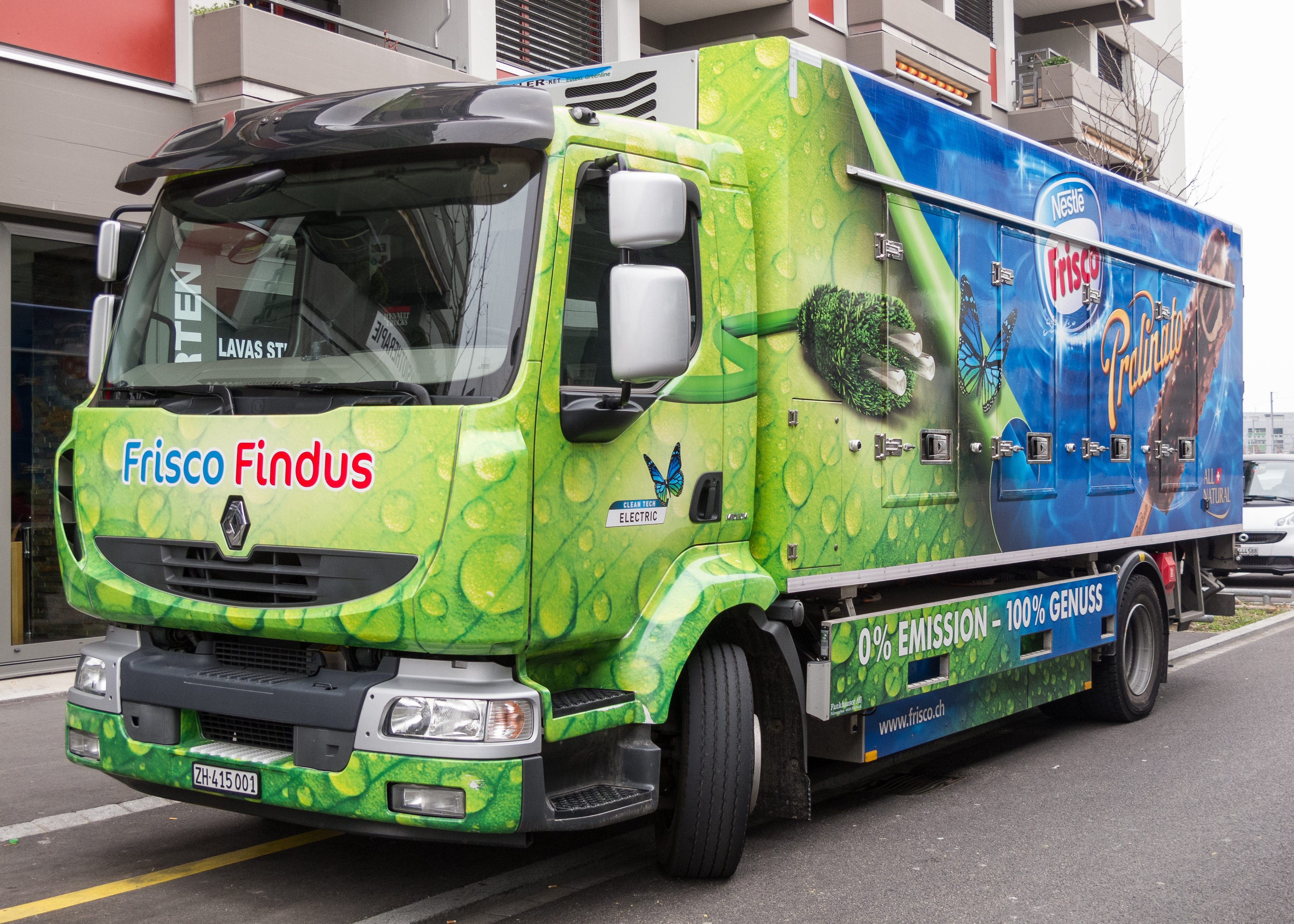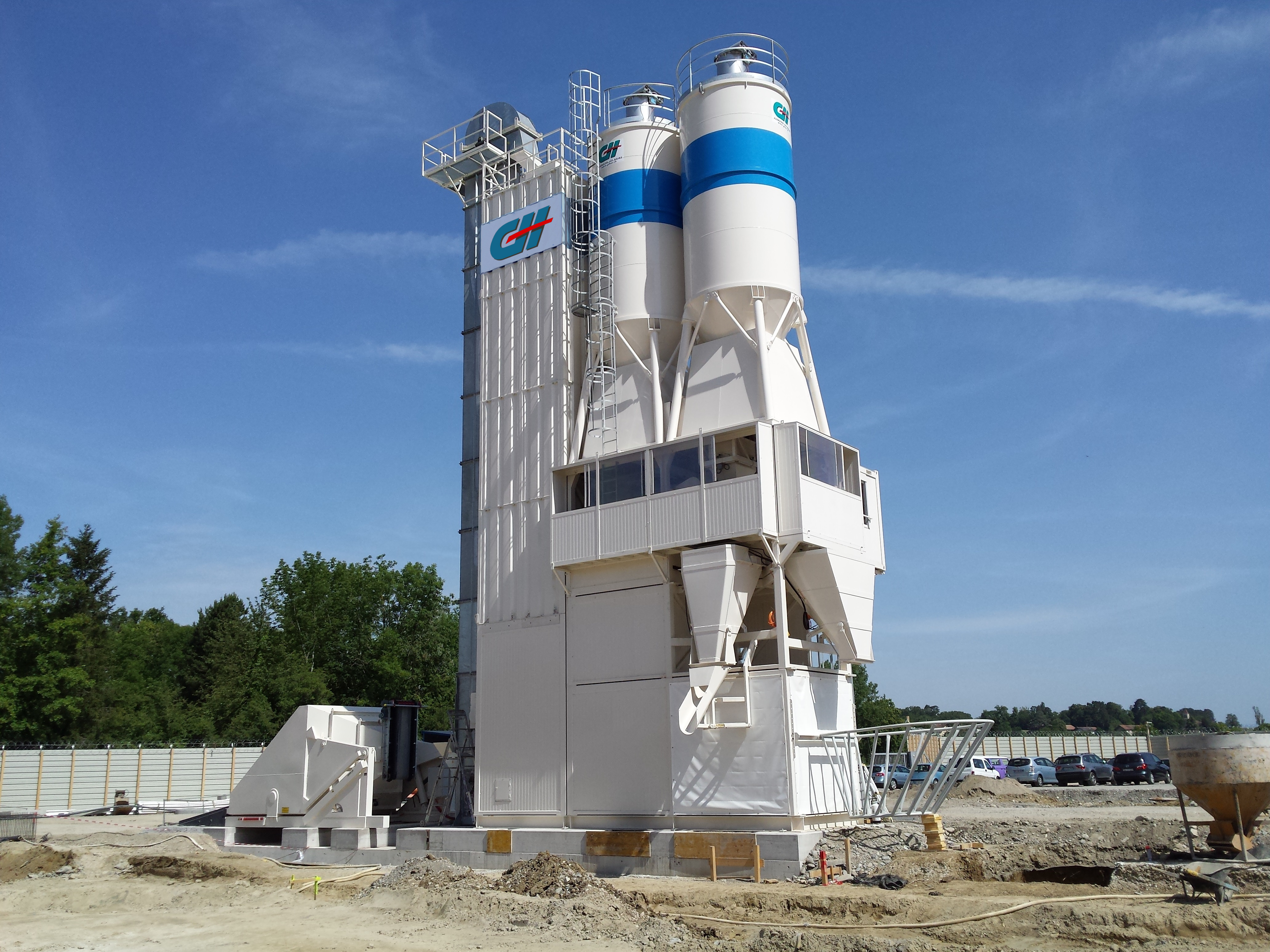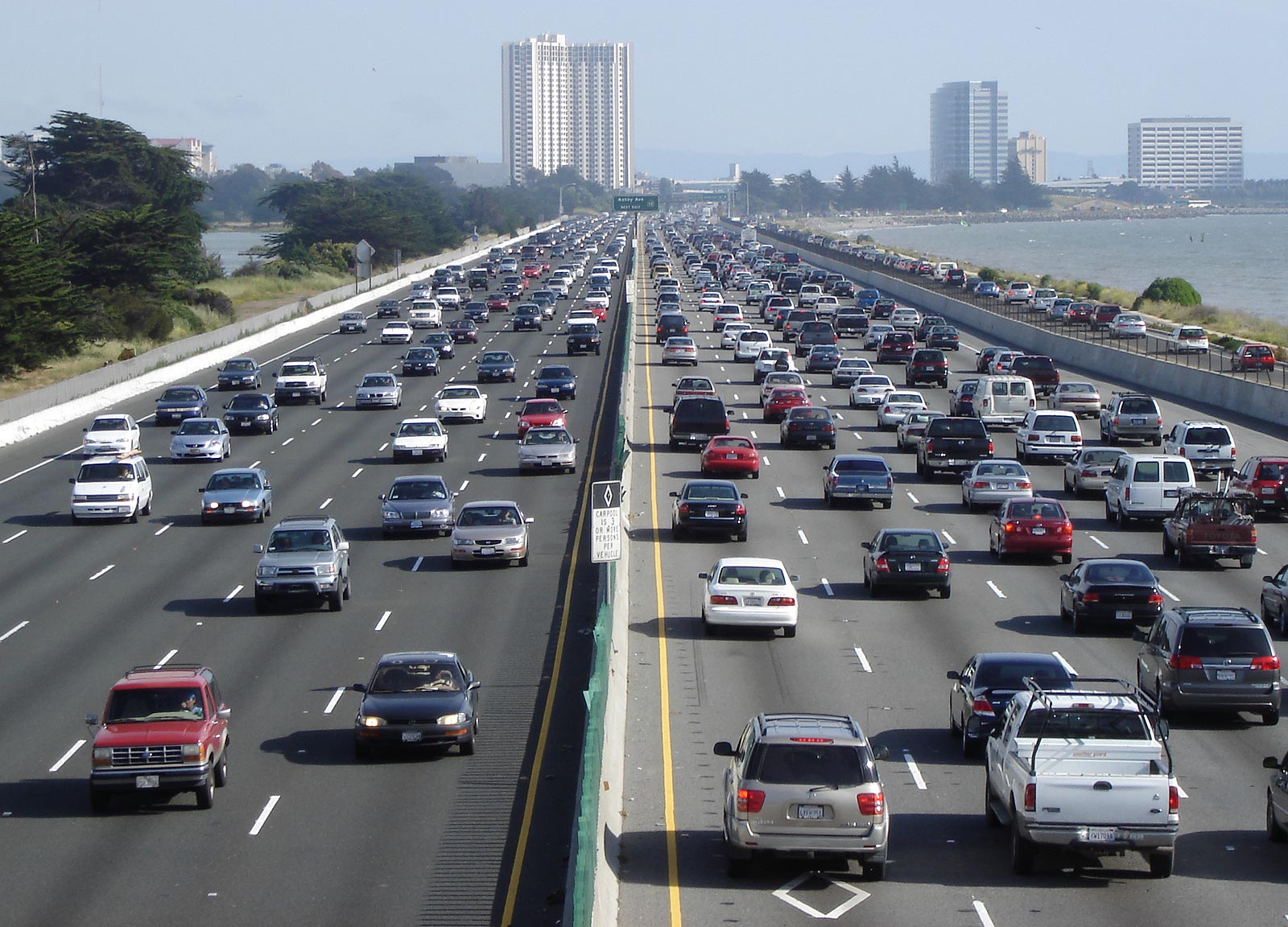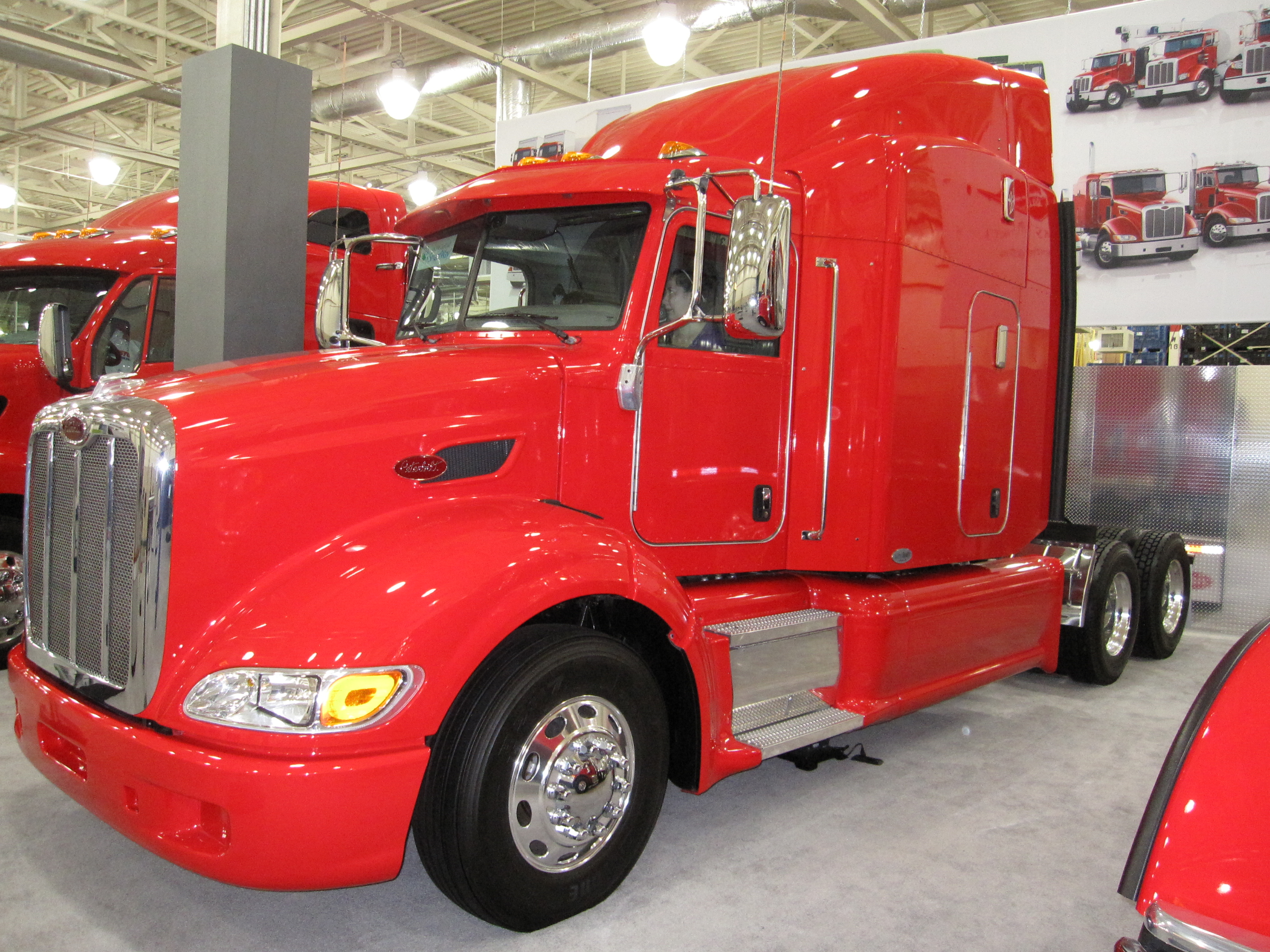|
Trucks
A truck or lorry is a motor vehicle designed to transport freight, carry specialized payloads, or perform other utilitarian work. Trucks vary greatly in size, power, and configuration, but the vast majority feature body-on-frame construction, with a cabin that is independent of the payload portion of the vehicle. Smaller varieties may be mechanically similar to some automobiles. Commercial trucks can be very large and powerful and may be configured to be mounted with specialized equipment, such as in the case of refuse trucks, fire trucks, concrete mixers, and suction excavators. In American English, a commercial vehicle without a trailer or other articulation is formally a "straight truck" while one designed specifically to pull a trailer is not a truck but a "Tractor unit, tractor". The majority of trucks currently in use are powered by diesel engines, although small- to medium-size trucks with gasoline engines exist in North America. Electric truck, Electrically powered tr ... [...More Info...] [...Related Items...] OR: [Wikipedia] [Google] [Baidu] |
Semi-trailer Truck
A semi-trailer truck (also known by a wide variety of other terms – see below) is the combination of a tractor unit and one or more semi-trailers to carry freight. A semi-trailer attaches to the tractor with a type of hitch called a ''fifth wheel''. Other terms There are a wide variety of English-language terms for a semi-trailer truck, including: American English: *Semi-trailer *Semi-truck *Truck & trailer *Semi *Big rig *Tractor-trailer *Eighteen-wheeler British English: * Articulated lorry * Artic (short for articulated lorry) * Juggernaut *Heavy Goods Vehicle/HGV Canadian English: *Transport truck *Transfer truck Regional configurations Europe The main difference between tractor units in Europe and North America is that European models are cab over engine (COE, called "forward control" in the United Kingdom), while the majority of North American trucks are "conventional" (called "normal control" or "bonneted" in the UK). European trucks, whether ... [...More Info...] [...Related Items...] OR: [Wikipedia] [Google] [Baidu] |
Electric Truck
An electric truck is a battery electric vehicle (BEV) designed to transport cargo, carry specialized payloads, or perform other utilitarian work. Electric trucks have serviced niche applications like milk floats, Ground support equipment#Pushback tugs and tractors, pushback tugs and Forklift#Battery-electric, forklifts for over a hundred years, typically using Lead-acid battery, lead-acid batteries, but the rapid development of lighter and more energy-dense Electric vehicle battery#Electric vehicle battery types, battery chemistries in the twenty-first century has broadened the range of applicability of electric propulsion to trucks in many more roles. Electric trucks reduce noise and pollution, relative to internal-combustion trucks. Due to the high efficiency and low component-counts of electric power trains, no fuel burning while idle, and silent and efficient acceleration, the costs of owning and operating electric trucks are dramatically lower than their predecessors. A ... [...More Info...] [...Related Items...] OR: [Wikipedia] [Google] [Baidu] |
Large Goods Vehicle
A large goods vehicle (LGV), or heavy goods vehicle (HGV), in the European Union (EU) is any lorry with a Gross combined weight rating, gross combination mass (GCM) of over . Sub-category N2 is used for vehicles between 3,500 kg and and N3 for all goods vehicles over 12,000 kg as defined in Directive 2001/116/EC. The term medium goods vehicle is used within parts of the UK government to refer to goods vehicles of between 3,500 and 7,500 kg which according to the EU are also "large goods vehicles." Commercial carrier vehicles of up to 3,500 kg are referred to as light commercial vehicles and come into category N1. To cross country borders in the EU, LGVs must not exceed 44 tonnes laden weight or longer than , but longer and heavier vehicles (Longer Heavier Vehicle, LHVs) are used within some EU countries, where they are known as Gigaliner, EuroCombi, EcoLiner, innovative commercial vehicle, mega-truck, and under other names. They are typically long and weig ... [...More Info...] [...Related Items...] OR: [Wikipedia] [Google] [Baidu] |
Concrete Mixer
A concrete mixer (also cement mixer) is a device that homogeneously combines cement, Construction aggregate, aggregate (e.g. sand or gravel), and water to form concrete. A typical concrete mixer uses a revolving drum to mix the components. For smaller volume works, portable concrete mixers are often used so that the concrete can be made at the construction site, giving the workers ample time to use the concrete before it hardens. An alternative to a machine is mixing concrete by hand. This is usually done in a wheelbarrow; however, several companies have recently begun to sell modified tarpaulin, tarps for this purpose. The concrete mixer was invented by Columbus, Ohio industrialist Gebhardt Jaeger. History One of the first concrete mixers ever was developed in 1900 by T.L. Smith in Milwaukee. The mixer already exhibited the still common basic construction with a tiltable conical drum (as double cone at that time) with blades. On February 9, 1904, the first portable concrete ... [...More Info...] [...Related Items...] OR: [Wikipedia] [Google] [Baidu] |
Steam Wagon
A steam wagon (or steam lorry, steam waggon or steamtruck) is a Steam power, steam-powered truck for carrying freight. It was the earliest form of lorry (truck) and came in two basic forms: ''overtype'' and ''undertype'', the distinction being the position of the steam engine, engine relative to the boiler. Manufacturers tended to concentrate on one form or the other. Steam wagons were a widespread form of powered road traction for commercial haulage in the early part of the twentieth century, although they were a largely British phenomenon, with few manufacturers outside Great Britain. Competition from internal-combustion engine, internal-combustion-powered vehicles and adverse legislation meant that few remained in commercial use beyond the Second World War. Although the majority of steam wagons have been scrapped, a significant number have been preserved in working order and may be seen in operation at steam fairs, particularly in the UK. Design features The steam wagon came ... [...More Info...] [...Related Items...] OR: [Wikipedia] [Google] [Baidu] |
Automobile
A car, or an automobile, is a motor vehicle with wheels. Most definitions of cars state that they run primarily on roads, Car seat, seat one to eight people, have four wheels, and mainly transport private transport#Personal transport, people rather than cargo. There are around one billion cars in use worldwide. The French inventor Nicolas-Joseph Cugnot built the first steam-powered road vehicle in 1769, while the Swiss inventor François Isaac de Rivaz designed and constructed the first internal combustion-powered automobile in 1808. The modern car—a practical, marketable automobile for everyday use—was invented in 1886, when the German inventor Carl Benz patented his Benz Patent-Motorwagen. Commercial cars became widely available during the 20th century. The 1901 Oldsmobile Curved Dash and the 1908 Ford Model T, both American cars, are widely considered the first mass-produced and mass-affordable cars, respectively. Cars were rapidly adopted in the US, where they replac ... [...More Info...] [...Related Items...] OR: [Wikipedia] [Google] [Baidu] |
Motor Vehicle
A motor vehicle, also known as a motorized vehicle, automotive vehicle, automobile, or road vehicle, is a self-propelled land vehicle, commonly wheeled, that does not operate on railway track, rails (such as trains or trams), does not fly (such as airplanes or helicopters), does not float on water (such as boats or ships), and is used for the transportation of people or cargo. The propulsion#Vehicular propulsion, vehicle propulsion is provided by an engine, engine or motor, usually a gasoline engine, gasoline/diesel engine, diesel internal combustion engine or an electric motor, electric traction motor, or some hybrid vehicle drivetrain, combination of the two as in hybrid electric vehicles and plug-in hybrid vehicles. For legal purpose, motor vehicles are often identified within a number of vehicle classes including cars, buses, motorcycles, off-road vehicles, light trucks and regular trucks. These classifications vary according to the legal codes of each country. Internationa ... [...More Info...] [...Related Items...] OR: [Wikipedia] [Google] [Baidu] |
Tractor Unit
A tractor unit, also known as a truck unit, lorry unit, power unit, prime mover, ten-wheeler, semi-tractor, semi-truck, semi-lorry, tractor cab, truck cab, lorry cab, big rig tractor, big rig truck or big rig lorry or simply a tractor, truck, lorry, semi, big rig or rig, is a characteristically heavy-duty towing engine that provides motive power for hauling a towed or trailered load. The largest such vehicles are similar to locomotives. These fall into two categories: heavy- and medium-duty military and commercial rear-wheel-drive semi-tractors used for hauling semi-trailers, and very heavy-duty typically off-road-capable, often 6×6, military and commercial tractor units, including ballast tractors. It should not be confused with a tractor-trailer which is a combination of a tractor unit and semi-trailer, whereas a ''tractor unit'' describes only the tractor portion. Overview Tractor units typically have large-displacement diesel engines for power, durability, an ... [...More Info...] [...Related Items...] OR: [Wikipedia] [Google] [Baidu] |
Freightliner M2 106 6x4 2014 (14240376744)
Freightliner may refer to: * Freightliner Trucks, a heavy vehicle brand of Daimler AG * Freightliner Group, a European rail-freight operator * Freight liner (ship), describing a cargo ship operating to a repeating schedule See also * * * *Freight * Freighter (other) * Liner (other) Liner or LINER may refer to: Line drawing * Eye liner, a type of makeup * Marker pen, a porous-tip pen with its own ink source * Multiple lining tool used in engraving * A sable brush used by coach painters Linings * Acoustic liner, a noise ... * Line (other) {{disambiguation ... [...More Info...] [...Related Items...] OR: [Wikipedia] [Google] [Baidu] |
De Dion-Bouton
De Dion-Bouton was a French automobile manufacturer and railcar manufacturer, which operated from 1883 to 1953. The company was founded by the Marquis Jules-Albert de Dion, Georges Bouton, and Bouton's brother-in-law Charles Trépardoux. Steam cars The company was formed in 1883 after de Dion saw a toy locomotive in a store window in 1881 and asked the toymakers to build another. Engineers Bouton and Trépardoux had been eking out a living with scientific toys at a shop in the Passage de Léon, near the rue de la Chapelle in Paris.Wise, p. 510. Trépardoux had long dreamed of building a steam car, but neither he nor Bouton could afford it. De Dion, already inspired by steam in the form of railway locomotives,Georgano, p. 27. and with ample money, agreed to back them, and Trépardoux et Cie was formed in Paris in 1883. That became the De Dion-Bouton automobile company, the world's largest automobile manufacturer for a time, well known for the quality, reliability, and du ... [...More Info...] [...Related Items...] OR: [Wikipedia] [Google] [Baidu] |
Steam Tractor
A steam tractor is a tractor powered by a steam engine which is used for pulling. In North America, the term ''steam tractor'' usually refers to a type of agriculture, agricultural tractor powered by a steam engine, used extensively in the late 19th and early 20th centuries. In Great Britain, the term ''steam tractor'' is more usually applied to the smallest models of traction engine – typically those weighing seven tons or less – used for hauling small loads on public roads. Although known as ''light steam tractors'', these engines are generally just smaller versions of the "traction engine#Road locomotive, road locomotive". This article concentrates on the steam-powered agricultural vehicles intended for the direct-pulling of plows and other implements (as opposed to cable-hauling). Development Owing to differences in soil conditions, the development of steam-powered agricultural machines differed considerably on either side of the Atlantic Ocean, Atlantic ... [...More Info...] [...Related Items...] OR: [Wikipedia] [Google] [Baidu] |
COMMONNAME
A common name, in the nomenclature of biology, is a name of a taxon or organism based on the normal language of everyday life. Common name may also refer to: * Common name (chemistry) (also: trivial name), non-systematic name for a chemical * Common noun in linguistics, noun that refers to a class of entities rather than a unique entity * CN (or "common name") in cryptography, part of an X.509 attribute certificate See also * Generic name (other) {{disambiguation ... [...More Info...] [...Related Items...] OR: [Wikipedia] [Google] [Baidu] |








